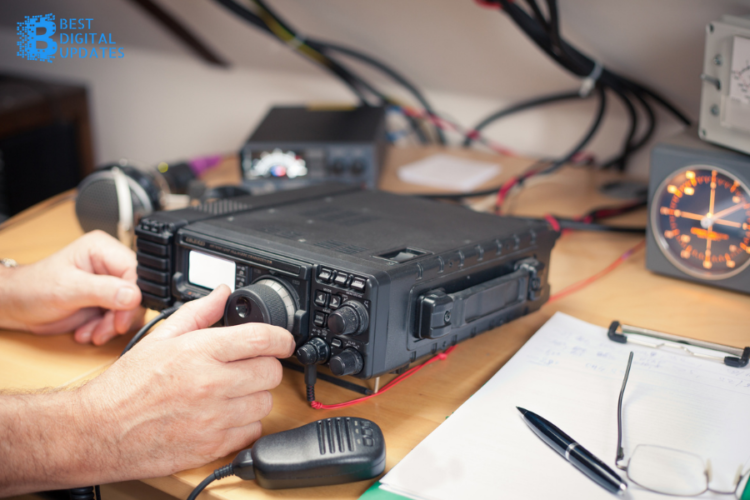Did you know that the radio was invented in the 1890s as an effort to create a “wireless” telegraph?
This gave birth to a whole separate communications field. But, do you actually understand how do radios work?
You don’t need to know much about how radios function to repair them. You only need to check for the usual faults that plague all electrical devices. It is, nevertheless, vital to have a basic understanding of how this little machine functions.
Read on for our full radio guide on how the science of radio all works.
What Is a Radio: The Components of a Radio
Static is quite simple to broadcast.
Today’s radios, on the other hand, all transmit data using continuous sine waves. These are audio, video, and data. It’s because so many different people and things want to utilize radio waves at once that we have to resort to using continuous sinusoids.
You can see every radio wave (in the form of a sine wave) right now. And, there are hundreds of different types of radio waves (in the form of sine waves) all around you.
These include broadcast TV signals, AM/FM broadcast radios, satellite TV transmissions, emergency radios, cell phone conversations, and GPS signals. Today, we use radio waves in a wide variety of ways.
In order to distinguish between the various radio signals, they all employ distinct sine wave frequencies.
There are two aspects to every radio setup.
- The transmitter
- The receiver
We use radio waves to convey a message encoded on a sine wave, such as the sound of a person’s voice, images for a television set, or data for a radio modem.
In order to decipher the message, the receiver processes the sine wave it gets from the radio waves. You’ll find that the transmitter and receiver can use antennas to send and receive a radio signal.
How Do Radios Work: Understanding Basic Radio Theory
Theoretically, you can use a strong amplifier to link a microphone directly to a broadcast antenna.
Since you would require an aerial several miles long to do this, and there would be no way to send more than one program at a time without them becoming jumbled up, this would not work in reality.
The 20Hz – 20kHz range is the frequency range of an audio frequency (AF) signal, which a microphone can generate or deliver to a loudspeaker (20 – 20,000 vibrations per second).
This signal will imprint in some manner on a much higher Radio Frequency (RF) “carrier” to be transmitted. Modulation is a procedure that people can use in a variety of ways.
Demodulation and amplification of the aerial’s weak signal are the last steps before a radio receiver can drive a loudspeaker or headphones by selecting the station you wish to listen to and rejecting all the others (“tuning”). Before, during, and after the demodulation process, amplification is often used to boost the signal. A great example of a high-quality radio would be the BK radio.
We’ll begin by looking at a variety of modulation techniques, and then explain how tuning works.
Amplitude Modulation (AM)
Amplitude Modulation, or AM, is the simplest kind of modulation. The amplitude of the audio (AF) signal moves to the RF carrier.
Demodulation is pretty straightforward. Because it is both positive and negative and oscillates between the two at a rate that is much too rapid for a loudspeaker or headphones to react to, feeding the modulated RF straight into one would result in no output.
To get the original AF signal, you’ll need to remove all of the negatives and average the remaining positives, which you can do by slicing and dicing the signal.
Things like a car’s ignition system or the refrigerator going on and off may interfere with AM. Using either of these methods, the loudspeaker will create clicks as a result of amplitude spikes in the signal.
Frequency Modulation (FM)
The amplitude of the carrier stays constant, while the frequency is modulated in accordance with the audio signal, as seen in the second figure. Fortunately, we don’t need to dive into the details of demodulation for the sake of repair since there are a number of different approaches.
When using FM, any spikes in the signal caused by interference may be easily cut out by setting the amplitude to a maximum amount, making them almost unnoticeable in the audio output.
Digital Modulation
Audio signals are converted to digital before being broadcast through digital radio (also known as DAB or Digital Audio Broadcasting).
This involves sampling, measuring, and then converting the amplitude of the audio stream (or each channel in stereo) into a binary number several times per second. For audio with frequencies up to 20 kHz, the minimum “sampling rate” is 40,000 samples per second, which is the absolute minimum sampling rate.
A lot of data is generated, but because each sound wave is only slightly different from the preceding one, there is a lot of room for data reduction. A codec is responsible for this (coder-decoder).
It is possible to repair brief sequences of corrupted bits at the receiving end, as well as to identify larger sequences of damaged bits. In order to modulate a carrier, an “ensemble” is created by multiplexing the output data streams from many programs.
In a digital receiver, all of these steps are carried out in reverse order.
More programs may be aired simultaneously in a single DAB+ ensemble thanks to the adoption of a more efficient encoder and stronger error correction. There is a sharper “cliff edge” at which a weak signal degrades into burbling noise before being lost, although it is still possible to successfully receive a lesser signal using this technique.
The Nuances of Radios: Exploring Radio Tips
Even those of us who are used to using a radio on a daily basis tend to forget the basics of how radios work and function.
We hope that our guide on how do radios work dispels some common misconceptions about how they function. Next step, you’ll want to check out our technology section for additional explainers on the basics of amplifiers and much more.




















